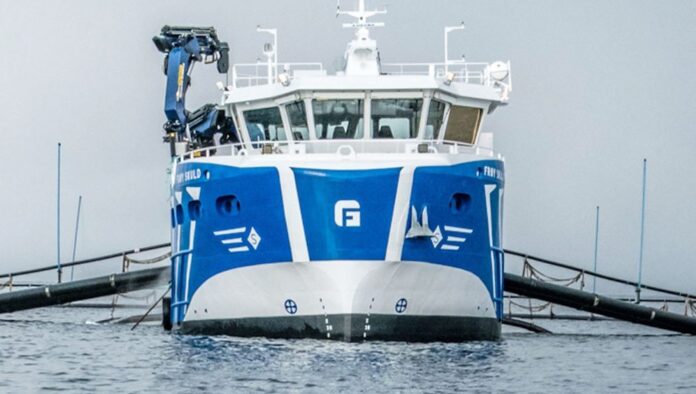Goldman Sachs Asset Management acquired well boat specialist Frøy in a $600 million deal in June.
Well boat and aquaculture services provider Frøy has submitted an application to be delisted from the Oslo Børs, the company announced on Friday.
The move comes three months after SalMar, Norway’s second largest salmon producer, agreed to sell a 72 percent stake in Frøy to Goldman Sachs Asset Management for NOK 6.6 billion ($600 million).
Falcon Bidco, a company indirectly wholly owned by infrastructure funds managed by Goldman Sachs, struck a deal to buy the stake, which accounted for 72.11 percent of Frøy’s shares, at a price of NOK 76.50 per share.
The deal came as the result of a strategic review initiated on Jan. 13 aimed at maximising value for Frøy shareholders. The purchase price represents a 50 percent premium over Frøy’s closing stock price of NOK 51.50 on Jan. 12, before the strategic review began.
SalMar had acquired its stake in Frøy after buying salmon producer NTS last year, primarily for its salmon production assets rather than the well boat services.
Why delist?
Voluntary delisting is a process by which a publicly-traded company opts to remove its shares from an exchange, often due to financial or strategic reasons.
Companies may opt for voluntary delisting for a variety of reasons, ranging from cost-saving measures to executing new strategic goals. When the management believes the cost of maintaining a listing outweighs the benefits it brings, such as access to capital and liquidity, they may opt for delisting to mitigate expenses.
Mergers and acquisitions (M&As) also frequently trigger voluntary delistings. After combining their assets and operations, companies often delist to reorganize their corporate structure. Post-reorganization, these companies may or may not relist on an exchange.
In other scenarios, private equity firms might acquire a publicly-listed company only to delist it later. This enables the firm to sell shares to private equity investors rather than the general public, aligning with their investment strategy.
The process of voluntary delisting involves several steps, including board approval, shareholder consent, and fulfilling regulatory obligations. Typically, a formal announcement is made, followed by the actual removal of the stock from the exchange.
It is worth noting that while voluntary delisting can offer advantages, it may also present challenges such as reduced liquidity and access to capital markets, potentially impacting the company’s growth trajectory and investor relations.

